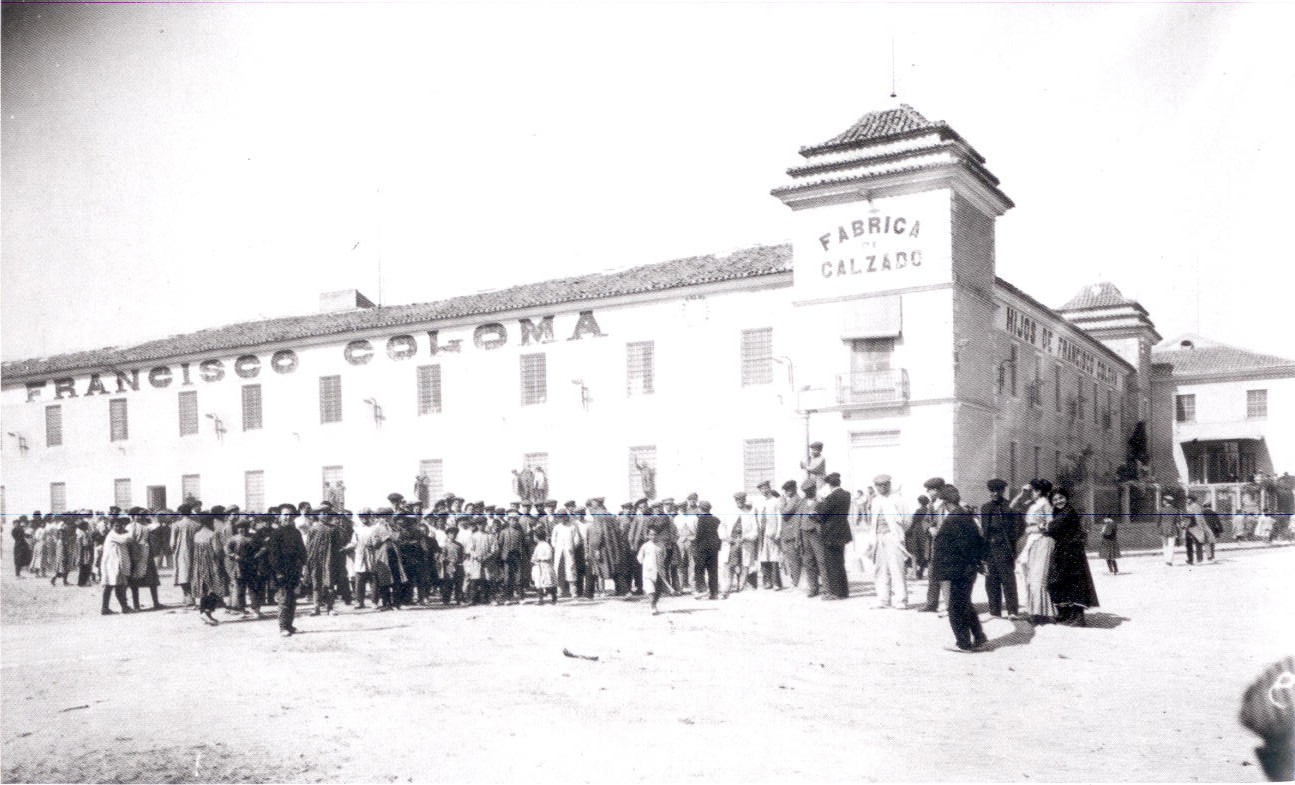The historical town of Almansa
Almansa is a small, quiet town, halfway between Albacete and Valencia. Its history dates back to the Roman times. Its castle, the most representative of Castilla La Mancha, is built on top of the Cerro del Águila, a great rock that crowns the town. The historic quarter, which was declared a Historic-Artistic Site, is formed by narrow streets that surround the castle. For the last 4 centuries, this small town has been dedicated, almost exclusively, to the ancient work of shoe making.

The early artisan workshops
Historical records show that artisan shoe production started flourishing in Almansa at the beginning of the 18th century. Shoes were crafted in small workshops, each one with a ‘Maestro’ artisan, helped by a pair of officials and one apprentice. The production made in these workshops was destined to local self provision and later on its selling and commercialization in the markets of the towns nearby. By the end of the 18th century, more than 200 small workshops were registered. These workshops, through a process of auto accumulation, would generate enough capital that would result in the creation of the first factories.
The first factories: the Coloma family
The Coloma family played a key role during the late 1800s in the shoe manufacture. They are highly regarded as the true authors of Almansa’s shoemaking business development. In 1815, Antonio Coloma, opened a small leather workshop, which after a few years of hard work, new ideas and technological breakthroughs, turned into Calzados Coloma, the biggest factory in Spain, with over 1,200 workers. The shoe production in Almansa during 1904 was estimated to be 87,000 pairs per year, ascending to 4.3 million pairs in 1912.
War and recession
The First and Second World Wars, the Spanish Civil War, the crisis of 1973… We have seen huge recession cycles, which destroyed thousands of jobs and companies. Luckily, the heritage of shoe production has passed on.

The recent years
Shoe makers from Almansa have gone through countless stages of both growth and crisis throughout history. This has made them mature and achieve a great degree of experience and craftsmanship to overcome the challenges of the market. Since the birth of the first artisan workshops to the actual situation, this town has lived around the production and elaboration of shoes.




